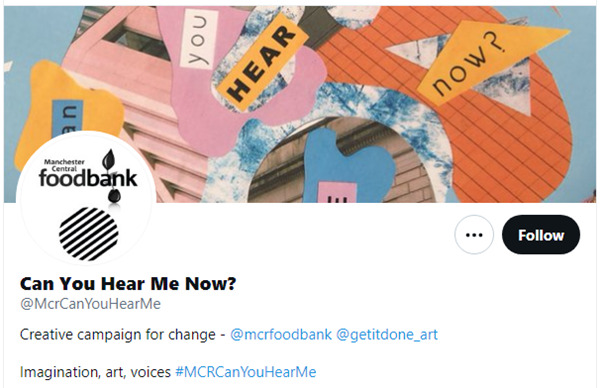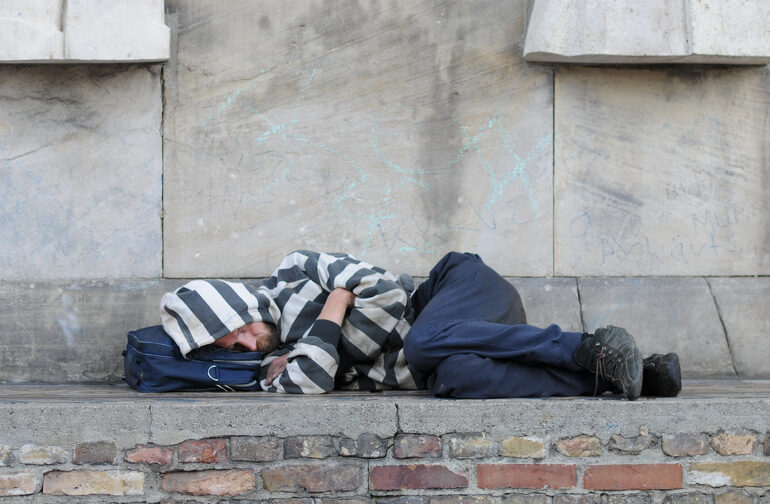Piccadilly Gardens is one of the most important sites in the city’s public life – a transport hub as well as a space to gather and meet, for recreation and relaxation, and for protest and engagement. For years, unfortunately, it is also been a focal point for some of our most persistent and severe social problems that occur primarily as a result of poverty.
Manchester City Council hope to transform the square into a welcoming and vibrant centre of civic activity. The public are currently invited to contribute to an online consultation on the future of the area and it is important that as broad a range of residents as possible are involved in the survey and the redevelopment process.
At the same time the pandemic has brought into sharp focus both the importance of accessible, inclusive, and safe public spaces as well as the deep inequalities in our society. Creating public spaces and a city that works for everyone will not be achieved solely with a council consultation and redevelopment: we need to transform the public discourse around poverty and representation. Civil society needs to play a leading role in challenging unhelpful narratives, amplifying the voices of those who need inclusive public spaces the most, and highlighting the underlying issues of poverty that underlie the square’s current state.
With this in mind, Manchester Central Foodbank, as part of our Can You Hear Me Now collaboration project with Manchester arts collective Get It Done, are taking the revamp as our inspiration to work creatively with our users and partner community groups to interrogate how the wider issues of inequality and poverty intersect with our public spaces. As well as asking adults and children to design their dream Piccadilly Gardens we will be discussing how the area and our other local public spaces make us feel, how poverty can impact on the way people access and utilise spaces, and putting together manifestos for inclusive public space.

“Eyesore”, “mudbath”, “disgrace” and “shithole” are a few of the less-than-positive descriptions foregrounded by the media in recent years to describe Piccadilly Gardens. The strength of these emotive reactions shows the importance of the plaza as a symbolic centre of the city’s public life and anger and upset at the way its current state becomes a reflection upon the city as a whole, for both locals and visitors.
For many it is an unsafe and threatening place to be avoided, or to pass through as quickly and unobtrusively as possible. According to police figures and everyday experiences of Mancunians the area is a hotspot for theft and other crime, antisocial behaviour, and alcohol and drug use. Over the last decade it has also been impossible for anyone visiting Piccadilly not to notice the prevalence of street homelessness and begging.
An important part of the council’s mission is therefore to try and “design out” some of the most visible and pernicious problems. Architecturally, part of this comes down to moving walls and buildings that create unseen hiding places, in conjunction with the rerouting of buses which offers the opportunity to further expand the square into a quieter, less polluted, much wider and open space. Moving the buses away also potentially reduces the extent to which Piccadilly is the point of arrival for thousands of routes each day and theoretically may thin out some of the most problematic behaviour to other points in the city centre.
Much antisocial behaviour occurs in plain sight already and other activities that visitors find unsettling, like begging, will continue to occur in places with the largest footfall. Even if architectural and planning solutions as well as closer surveillance and policing can successfully drive away the concentration of issues from the area, they are unlikely to solve the problems. People may move into less visible locations, other parts of the city centre, or out of the centre altogether to pop up in residential neighbourhoods elsewhere.
As a community we need to be asking ourselves tough questions about why we feel so uncomfortable when we see some of the activity that happens in the square. This is the society that we live in after a decade of swingeing cuts to frontline support services and an acute housing crisis. It is a reflection on our city and all of us as citizens.
Avoiding mention of the most emotive and unsettling issues and working to “design out” unsettling behaviours can potentially look like sweeping away or trying to ignore this uncomfortable reality and responsibility.
Real citizenship and leadership requires us both to work to make the space better and safer but also push front and centre the conversations about why inequalities and poverty have risen over the last decade. We need to hear the testimony of those impacted by poverty, and to change attitudes to build greater support for long term and sustainable solutions.
I doubt anyone envies the council and combined authority’s task in trying to address complex and long-term problems with slashed resources and limited powers over policy. But, the impact of Housing First programmes and the provision of hotel accommodation during the pandemic shows that many of the chronic issues around housing in particular are a societal choice, as are government policies towards benefits and social support. It is through changing attitudes and the changes in policy that follow from this that the real solutions will come.

We shouldn’t forget that, as well as being a focal point for homelessness and antisocial behaviour, Piccadilly is also a location for support through distribution of food and other materials and outreach and advice work. It’s essential then that community groups, and through them the voices of those who rely upon their services and support, are publicly foregrounded during the redevelopment process and that there is a role for them in both designing the space but also in the future management of the square.
Another way in which the square can be managed more closely is through expanding the areas utilised by cafes, bars, and restaurants or more regular market stalls, evocative perhaps of grand European piazzas. At the moment the types of businesses around the square do not generally fit this pattern, so work would be needed to generate more suitable commercial units but there is some appeal in this concept as it would further change the square’s atmosphere.
There is a balance to be struck here, however, because the proliferation of semi-public space has a potential knock-on effect on who uses the square and how it is used.
There is already plenty of access in central Manchester to semi-public social space in the shape of bars, cafes, and restaurants but this is, of course, contingent on having the income to be able to afford to access them. The expansion of these types of businesses might help to change the character of an area but it also creates a division between those using the space for consumption and those using it as a public facility.
The pandemic has brought home to all of us the importance of accessible, safe, open, and green space, particularly highlighting impacts on health and wellbeing for those living in cramped accommodation with limited or no access to a garden or balcony.
The scores of children who already use the fountains and play area on hot summer afternoons is an essential aspect of the current Piccadilly. The council’s hope, therefore, that it should be a “place for fun” is highly encouraging, as are survey questions on play and fountain provision, hinting that its role as vital city centre parkland could be expanded.
The considerations about security and safety in the square are most important when it comes to thinking about those individuals and families for whom the provision of public park and play space is essential, as they will be most impacted if the space remains unwelcoming or unsettling. The limitations generated by economic barriers to access, need to be weighed into this balance.

Also encouraging is the push for the square to host more events – hopefully, the focus will be on offering access to cultural activities that would otherwise be inaccessible because of income or that have the most impact on the diversity of experience, connection, and educational opportunity available to those on the lowest incomes. Particularly this might include isolated people or parents of younger children during weekdays, school holiday activities for children, and art and music events that appeal to a broad audience.
It would be great to see the consultation lead to a coordinated plan for Piccadilly continuing to be a point of outreach and support for struggling people, but also providing a platform for representing diverse narratives and voices. A place for public engagement, art, exhibits, and donation points, in collaboration with charities, community groups, and local arts and youth organisations.
For generations Piccadilly Gardens has been a centre for protest and demonstration and the redevelopment would do well to think innovatively and creatively about how it can embody this vital tradition of being a representative and engaging “public square” at the centre of civic life and twenty-first century public discourse.
By Matthew Stallard
Have your say on the Piccadilly Gardens redevelopment in the councils consultation – click here.
Manchester Central Foodbank and Get It Done will be sharing the outcome of their creative campaign activities through their project Twitter account – click here.
You can Buy One and Gift One on their creative campaign booklets at their Etsy Shop – click here.
Information about how to access help from the foodbank and how to donate can be found on the charity’s website – click here.
Sign up to The Meteor mailing list – click here.
Feature image: Wikipedia Commons


Leave a Reply